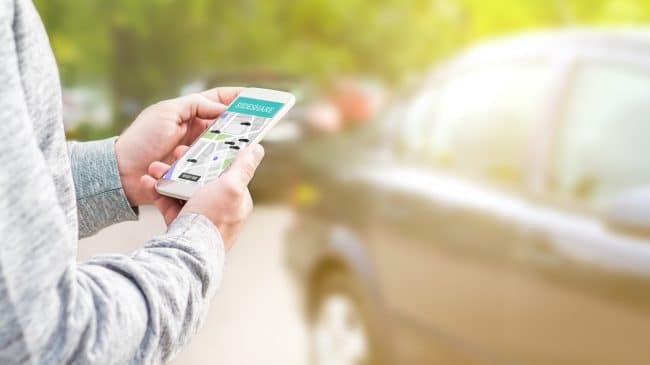In large, urban cities, traditional transportation options are often far from ideal. Public transportation may be unreliable or may not operate late at night or on weekends. Driving can be plagued by traffic congestion and be stressful. And parking can be expensive and difficult to find.
Ride-sharing applications, such as Uber and Lyft, solve some of those issues. They allow users to request to be picked up by a driver, who typically arrives in a few minutes and drives them to their destination. Now Uber and Lyft are increasingly offering “pooling” services for customers looking for a discounted rate who don’t mind sharing the car with other users. “Ride-pooling” is one of the fastest growing areas of ridesharing and can help cities.
“Pooling” services are gaining popularity due to their inexpensive rates. An algorithm matches multiple users, who are not traveling together, and then, mindful of the driver, calculates the most economical route for all. Uber has two pooling services: Uber Pool and Uber Express Pool. Lyft offers a comparable option: Lyft Line. Riding with strangers may not be for everyone, but anyone who has used public transportation is already familiar with the experience.
Critics claim that ride-hailing services add more cars to the road. An Uber or Lyft driver may spend time on the road, for example, circling around a busy area ready to pick up potential passengers. A recent report from the University of California, Davis, Institute of Transportation Policy seems to corroborate that view. The 2017 report found that, if ridesharing were unavailable, “49 percent to 61 percent of ride-hailing trips would be accomplished by walking, biking, or transit, or would be eliminated.”
But many of those “eliminated” trips are critical. Ride-sharing induces additional economic development that would not otherwise have occurred. For example, family members may choose to use a ridesharing service to go out and dine at a restaurant when they otherwise would have stayed home. In this case, ridesharing may increase traffic congestion but it also increases economic activity.
Additionally, many of the ride-hailing trips occur at a time when walking, biking or using transit is inopportune. A 2016 study by the American Public Transportation Association found “a clear peak in demand… between 10 pm and 4 am on weekends” for ridesharing services.Ride-hailing apps may add more cars on the road, but during the peak hours of use (10 pm to 4 am), there are few other viable transportation options. In the UC Davis study, 33 percent of ride-hailing users said that they used these services instead of driving, to avoid drinking and driving. The current research tends to be mixed, but in at least some cities (Portland, San Antonio), the availability of ride-hailing services has reduced alcohol-related crashes.
Although these apps can help facilitate safe, evening transportation when public transportation may not be running, Uber and Lyft should continue to promote sustainable transportation. This includes finding ways to incentivize pooling services during all hours, working out any efficiency problems, and piloting the program in new cities. In a promising beginning for sustainable transportation, Lyft announced that Lyft Line accounted for the majority of Lyft rides taken in San Francisco in 2015. Although every city will have different transportation needs, this is good news for those of us who are concerned about reducing traffic congestion and greenhouse gasses—and yes, that includes Uber and Lyft.

